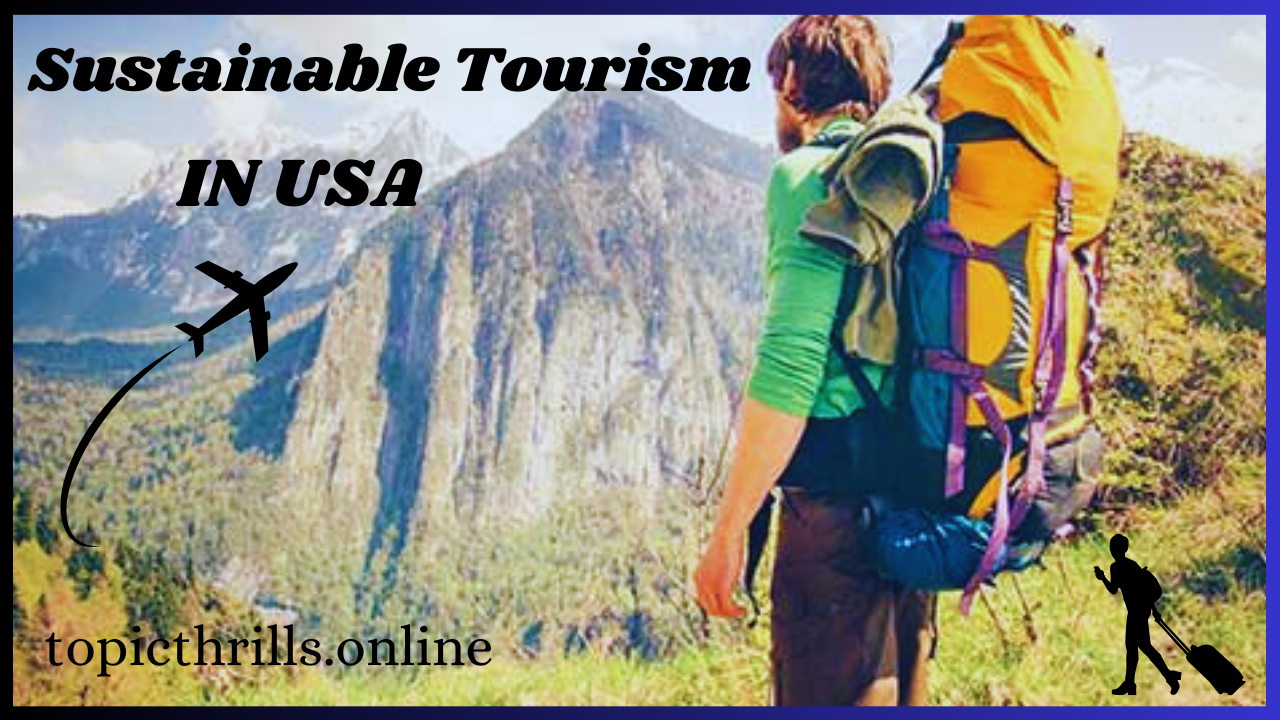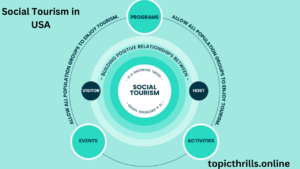With tourism expanding at one of the highest rates in the globe, it can give governments promoting themselves as vacation spots a much-needed economic boost. On the other hand, historically, tourism has had a disastrous impact on the environment, people, and their cultural identity.
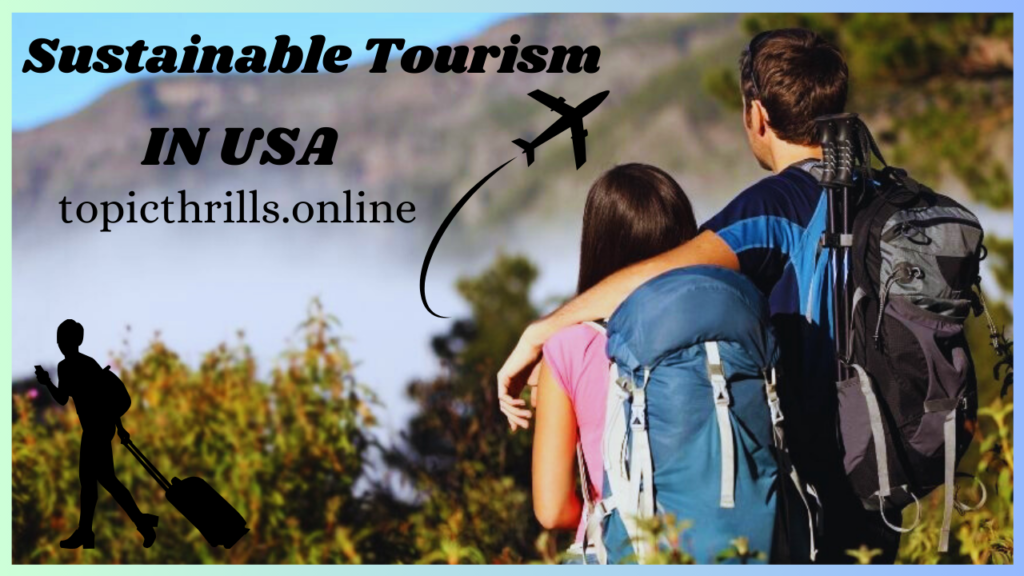
Let us describe sustainable tourism, which is defined by the World Tourism Organization of the United Nations as:
• Protect biodiversity and natural resources
• Respect and maintain host communities’ cultures while assisting them.
Fulfill the needs of the business and tourism sectors while making sure that everyone is socioeconomically secure.
The only way for tourism to survive and for us to respect each other, our planet, and ourselves is for the world to shift away from mindless mass tourism and toward the many successful examples of sustainable tourism already in place.
Here are some instances of sustainable tourism:
Controlled tourism in Bhutan:
Known for being among the happiest nations on earth, Bhutan is situated east of the Himalayas. Because of how little colonization has affected the nation, the people’s sustainable way of life has persisted.
The “high value, low impact” tenet guides tourism in Bhutan. Strict access procedures and a daily visitor fee have been implemented to achieve this. The daily rate covers all of the visit’s required costs, including lodging, meals, a certified tour guide, and hiking gear.
But a significant amount of the tariff goes toward funding Bhutan’s free health and education programs as well as infrastructure development and maintenance.
A solar powered resort in Fiji:
On the idyllic island of Malolos, Six Senses Fiji is a five-star resort that places a strong emphasis on sustainable tourism luxury and cultural sensitivity. In order to reduce the usage of single-use plastic bottles, the resort uses only solar energy and has its own on-site water filtering system and rainwater collection system.
As waste-free as feasible, the resort grows as much of its own produce and herbs as it can, uses a “worm-based septic system,” recycles, and composts. Additionally, it encourages material reuse.
In addition to supporting the Rise Beyond the Reef Charity, which attempts to close “the divide between remote communities, government and the private sector in the South,” all handicrafts and artwork at the hotel are created by the local villager’s Sustainable tourism development in the Pacific, improving the lives of women and children.”
An African backpacking company run by the community:
Community involvement and sustainable tourism” is the mission of Mumbi, a backpackers’ group on South Africa’s Wild Coast. Located in the center of a traditional community, the backpacker takes great satisfaction in having been assimilated into the Amakhosi culture of the Eastern Cape.
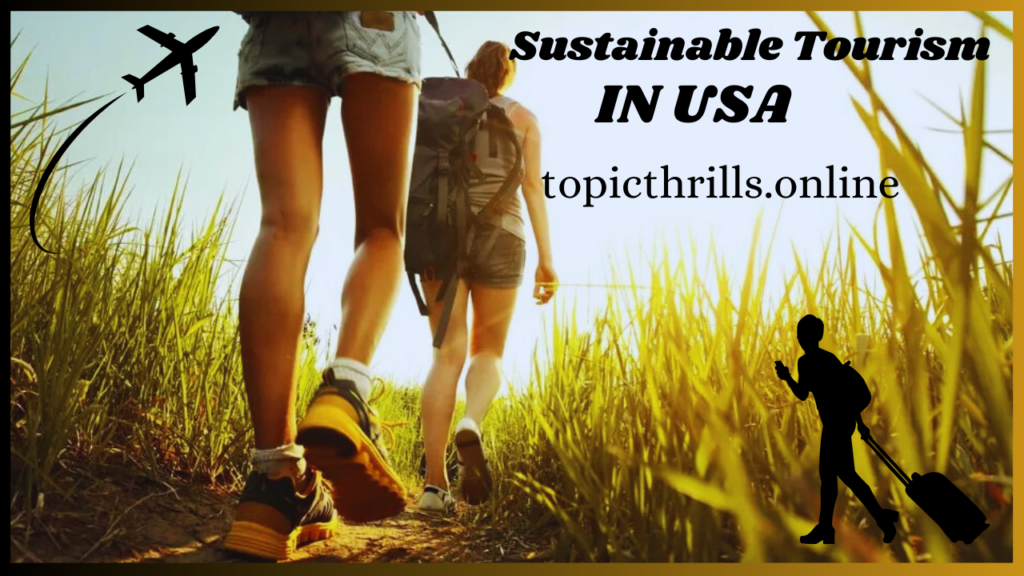
Mumbi has a distinctive ownership arrangement, with local staff, the amakhosi community association, and Trans Cape (Mumbi’s linked NPO) all owning shares in the company. The company implements several sustainability initiatives on site, such as energy efficiency, solar power, and trash management.
Trans Cape, a NPO founded by Mumbi, seeks “to provide communities access to the resources, support, and knowledge necessary to initiate the process of change towards a better quality of life.” The World Responsible Tourism Awards recognized The Backpacker as the best in poverty reduction in 2017 and gave it a silver prize.
Conservation ‘Volunteering’ in Belize:
Based in the UK, Responsible Travel is a responsible tourism company that promotes more ethical and environmentally friendly travel choices through its website and packages of sustainable and ethical travel. One such package allows people to volunteer in Belize at a conservation organization.
Visitors are able to “become a part of a volunteer group working five days a week in the rainforests of Belize by joining a team of local conservationists and experts.” In order to ensure responsible volunteer tourism that takes into account the environment, locals, and animals, volunteers go through a rigorous screening process, receive a volunteer guide prior to departing, and are provided with caller assistance. Their infographic below provides examples of several of their rules.
A foundation in Switzerland that is a sustainable travel operator:
Born out of one of Switzerland’s top tour operators, the Swiss Foundation for Solidarity in Tourism (SST) is a nonprofit organization. Founded in 2001, the foundation provides funding to organizations and projects in Switzerland and throughout the world that aim to enhance the quality of life for tourists, promote sustainable tourism development, and foster “intercultural understandings” between visitors and locals.
The organization awards funding to deserving projects with the goal of promoting sustainable tourism both offline and online. Just a few of the many and varied models of sustainable tourist development exist. The travel industry will surely need to undergo a radical makeover in order to move toward meaningful, low-impact travel experiences that don’t hurt people or the environment, as the world moves toward sustainability in all areas and commercial sectors.
Are you interested in supporting travel that is kind to the environment? Instead of pursuing a degree in sustainable tourism, why not look into master’s degrees in the field? Along with other courses, SUMAS provides a master’s degree in worldwide sustainable tourist management that will help you get ready for a career in sustainable tourism anywhere in the globe.world, SUMAS offers a master’s degree in international sustainable tourist management in addition to other courses.

Sustainable tourism around the World:
Costa Rica:
More than 6,000 different plant species and a diverse array of animals can be found in Costa Rica, a country in Central America. More than thirty percent of the country is made up of natural parks and protected reserves, which are there to be preserved. Costa Rica uses 99% renewable energy as well.
As its primary industry outside of agriculture, tourism was essential to the nation’s ability to maintain its sustainable development. To support the nation’s sustainable development, various labels have been established, including:
environmentally friendly buildings like ecologies and eco-friendly hotels, as well as travel pursuits like hiking and climbing that support the growth of green tourism.
Hotels are marked with leaves instead of stars to symbolically support this strategy.
Mongolia:
Mongolia is a country in Central Asia whose land is primarily made up of steppes and mountains. Consequently, most of the people that live in this country are farmers and herders, leading to a typically nomadic style of life. But people are rapidly giving up on living a nomadic lifestyle.
A large number of people would rather relocate closer to the larger cities, particularly due to the lack of revenue from farming. The nation has depended on sustainable tourism in an effort to maintain this traditional way of life.
Tourists staying with wandering herders are fully integrated into their way of life. They engage in the peripatetic lifestyle of livestock husbandry, learning about regional traditions and ways of life in addition to yurt living, which is a rather unique form of lodging.
In addition to their animals, this enables farmers to make extra money. Additionally, the nation has established an eco-volunteer initiative to support the Przewalski horse preservation program.
The final truly wild horses are these ones. The project started in the nineties can now be financed in large part because to this initiative, which blends ecological tourism, customs, and wildlife preservation.
Benin:
West African nation of Benin bases its economic strategy on welcoming tourists to its borders. Originating in voodoo, this nation has a legacy that is still much too little recognized, such as the Pendjari National Park or the lakeside city of Ganvié.They turn to eco-responsible, respectful, and sustainable tourism because they are eager to protect their customs and the nation’s biodiversity. They base their policy on three things:
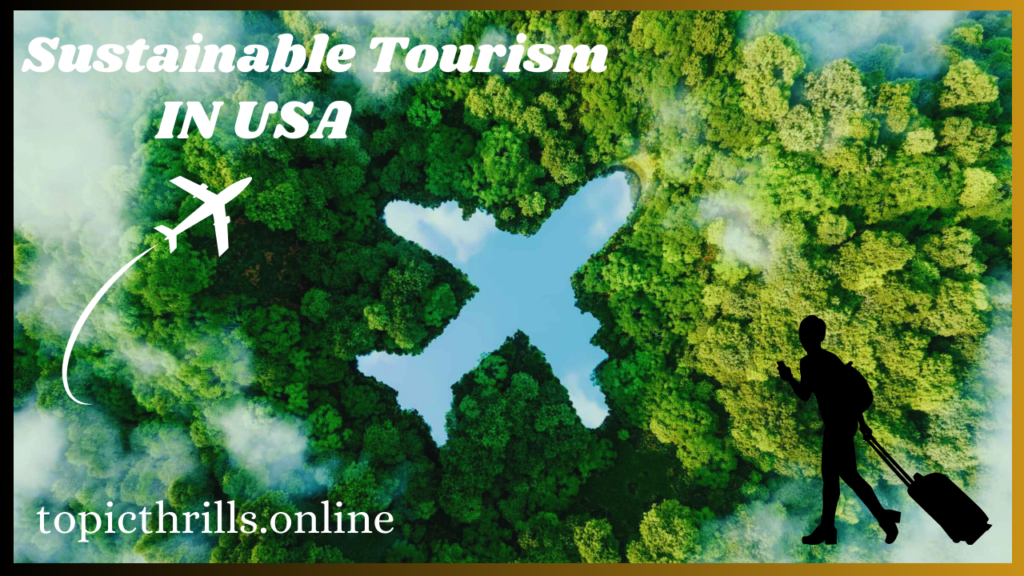
The preservation of Beninese culture, particularly its promotion to tourists; the creation of numerous jobs and training programs for locals in the tourism industry; the development of the environment, including the rhino reintegration project in Pendjari Park; and the economy
Europe on the road to eco-tourism:
Switzerland:
Switzerland, which is located in the heart of the Alps, is home to several lakes in addition to breathtaking alpine scenery. To protect its wildlife and plants, the nation demonstrates a determination to advance ecology. Thus, 58% of Swiss voters approved the statute enacting the 2050 energy policy in 2017.
The goal is to create renewable energies and break away from fossil fuels.The nation draws a large number of tourists due to its geographic location and multicultural past. Switzerland is promoting eco-friendly travel in keeping with its environmental decisions. In order to promote ecologically friendly modes of transportation, the government has installed more than 1200 km of bike lanes around the nation.
Additionally, Switzerland has updated its rental options to discourage mass tourism, including programs to draw tourists to and restore remote alpine areas. Ultimately, the government backs a number of creative solutions used in sustainable tourism, like the development of permaculture and the formation of car-sharing cooperatives.
Portugal:
Portugal is a country on the Iberian Peninsula that draws a lot of tourists each year, mostly because of its significant coastline. Its long coastline has shaped its culture in many ways, from its historically significant architecture—a holdover from the great maritime empire it was between 1500 and 1800—to its gastronomic customs, which are mostly derived from the sea.
The nation implements different strategies to adopt an ecological policy, such as reducing or eliminating the use of single-use plastic and optimizing water and waste management. Portugal unveiled its 2020. The objective is to showcase the nation’s variety and introduce visitors to regional traditions and customs. Ten million euros are being used to fund the advancement of initiatives.
Finland:
Finland is a country on the Baltic Sea that is well-known for Lapland, a travel destination with ski resorts and national parks. More than 1,800 sites in the nation were included in the European Natura 2000 Network in 2018, which unites European natural sites with remarkable biodiversity.
Over 12% of Finland’s land area is made up of these locations. The Sustainable Travel Finland brand will debut in 2019 according to Visit Finland. Companies who successfully complete the seven steps of a program intended to show their dedication to the national ideals of sustainable tourism are given this label.
In order to maintain sustainable tourism, they must also submit a plan of action for the upcoming years after receiving the designation. There are presently about sixty cities and/or industries that possess this label.
One of them is Pois, a natural community in Lapland that was the first place to receive the STF label. Green Destinations has listed it as one of the “100 best sustainable destinations in the world.” With the goal of being the cleanest resort in the world, the Piha ski resort—which also bears the designation—has turned carbon neutral.
Green Tourism in Some of France’s Most Central Regions:
Aquitaine:
New Aquitaine, the largest region in France with an area of over 84,000 km2, is situated in the southwest of the country. The landscapes that adorn it are diverse due to its vastness. For example, it is the most popular French region in terms of the number of employment generated by tourism since it borders the Atlantic Ocean and includes a portion of the Pyrenees.
In addition, the forest massif of New Aquitaine is the largest in France. It is self-sufficient, renewing itself enough to meet the needs of the area without depleting it.Regarding sustainable tourism, it is also the top region in France. It is true that 83 accommodations on its territory will have the European Ecolabel for services related to housing for tourists in 2017.
Reunion Island:
Volcanoes, tropical forests, and beaches make up the surface of this island, which is located east of Madagascar in the Indian Ocean. Reunion Island’s 42% of its area is dedicated to the National Park, which works to protect the island’s ecology. Its entirety is protected as a UNESCO World Heritage Site.Reunion Island shifts to sustainable tourism in order to preserve all of this. So, a number of labels have been established.
The Green Key certification is given to lodgings that meet strict environmental standards, including efficient waste management, energy and water consumption control, and increasing guest knowledge of the environment. Service providers in the field providing a tourism activity (hiking, rafting, etc.) are given the name “Activité éco-touristique Réunion.”
FAQS
Why is sustainable tourism important in Central America?
Mladinic posits that the region should promote sustainable tourism by positioning it as a means of showcasing lesser-known locations and appealing to a growing consumer base that values eco-friendly goods and services.
What is the main goal of sustainable tourism?
Therefore, in order to be sustainable, tourism must: Make the best use of the natural resources that are crucial to the growth of the industry, preserve vital ecological processes, and contribute to the preservation of biodiversity and the natural heritage of the world.
How important is tourism to the United States?
International and domestic tourism together account for billions of dollars in spending and millions of jobs in the United States.
How many types of sustainable tourism are there?
Sustainable tourism comes in a variety of forms, including ecotourism, green tourism, ecotourism, soft tourism, agrotourism in rural areas, community tourism, equitable tourism, solidarity tourism, and responsible tourism.
What is the key concept of sustainable tourism?
According to the World Tourism Organization, “tourism that addresses the needs of visitors, the industry, the environment, and host communities, taking full account of its current and future economic, social, and environmental impacts” is considered sustainable tourism.
Conclusion:
Sustainability in tourism is defined by the World Tourism Organization as “tourism that addresses the needs of visitors, the industry, the environment, and host communities, while taking full account its effects on the environment, society, and economy both now and in the future.”
This page provides examples of sustainable tourism which are environmentally friendly travel. I sincerely hope it proves to be very beneficial to you. Please utilize the website link to contact us with any questions you may have.
